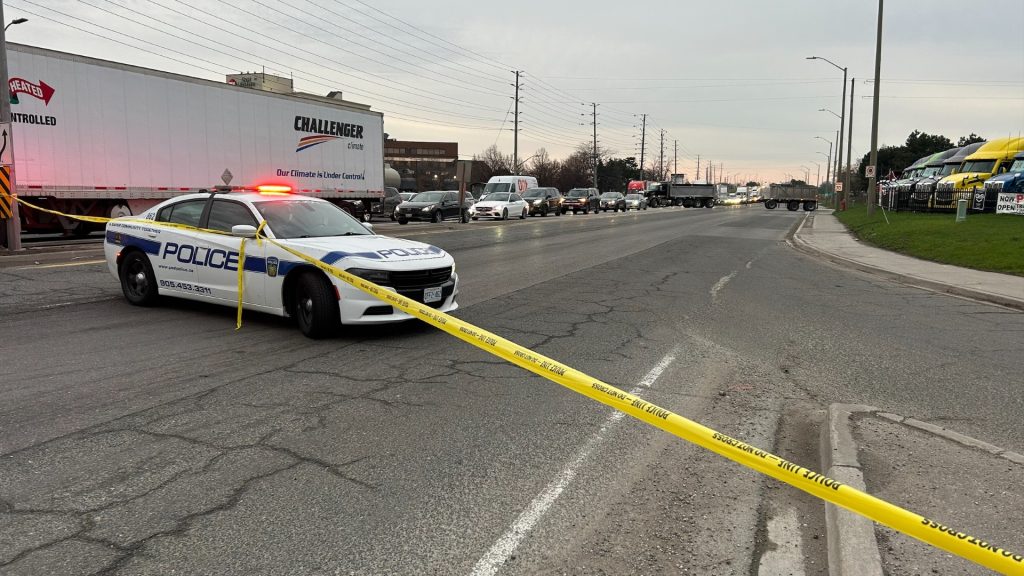Caribbean Carnival gets into its rhythm with annual parade
Posted August 2, 2014 9:06 am.
This article is more than 5 years old.
Toronto’s Scotiabank Caribbean Carnival culminated on Saturday with its annual parade, with colourful costumes, upbeat music and dancing in the streets.
Commonly called Caribana, the event is in its 47th year, billing itself an “explosion of Caribbean cuisine, music, revelry as well as visual and performing arts.”
The parade is the marquee event of the three-week festival and wound along a three-and-a-half-kilometre stretch of Toronto’s Lake Shore Boulevard.
Spokesperson Stephen Weir said the festival improved safety after the death of a Mississauga teenager who was run over by a float at last year’s parade. He said the trucks are now equipped with protective skirts.
Parade route
The parade, which took place on Lake Shore Boulevard West, between Strachan Avenue and Parkside Drive, started inside Exhibition Place at 9 a.m., and then headed west on Lake Shore to Parkside Drive. Below is a map of the parade route:
Caribbean Carnival Toronto parade map:
Road closures
The following roads are closed until 6 a.m. on Sunday:
- Westbound Lake Shore Boulevard West from Strachan Avenue to Parkside Drive
- Eastbound Lake Shore Boulevard West from Colborne Lodge to Strachan Avenue
- Dufferin Street south of Springhurst Avenue
The following ramps are closed until 6 a.m. on Sunday:
- Eastbound Gardiner Expressway exit to Jameson Avenue
- Jameson Avenue and British Columbia Road entrance ramps to eastbound Gardiner Expressway
- Westbound Gardiner Expressway to Dunn Avenue exit ramp
Click here for more information on the road closures, TTC access, disabled parking, and towing policy.
Click here to read a feature story on the Scotiabank Toronto Caribbean Carnival.
Caribbean celebration
Weir said the parade celebrates the end of slavery in the Caribbean, and the simple joy of freely walking down the street.
“It’s six to eight hours of people jumping up and waving flags and listening to soca music and steel bands,” Weir said. “It’s one of those things you can see it as a thing about emancipation or it can be a thing about just having a good time in the summer in Toronto. Both are equally right.”
Parade participants picked up their intricate outfits earlier this week, applying finishing touches and getting in the festival spirit. Nevrene Lindo said he was preparing by dancing in her room to infectious soca beats. Lindo, whose background is Jamaican, said first-time parade attendees should drink lots of water and rest up ahead of time.
“Everyone’s out there just having fun and letting the music just flow through their veins,” Lindo said. “It may seem overwhelming, but I would say they would enjoy it and they would probably want to come back. It’s a lot of fun. Everyone is so nice. There’s different cultures that will come out and…when you’re going for the first time you’ll learn new dances.”
Jane Soosaipillai has never participated in the parade before, nor is her heritage Caribbean, but she said she couldn’t pass up the opportunity when a friend asked if she wanted to join.
“I figure if you’re living in a city like Toronto where it’s multicultural you should get in on everything that you can,” she said. “I feel a little out of my territory, but I like that feeling. I feel like because I’m doing it I’m going to learn a lot more than people just looking in.”
This year will be Lateisha Williams’s seventh participating in the parade. Williams, who is part Bajan and part Jamaican, said even though the weather forecast is calling for a chance of thunderstorms, rain or shine the parade is fun — especially the music.
“When you see like 20,000 masqueraders on the road it’s incredible,” she said. “I love soca music…It’s just something that makes you happy. When you hear soca it’s just, you want to jump. You want to jump up and down. You want to smile.”










